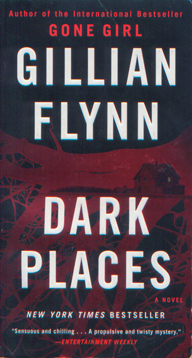Gillian Flynn makes Satanism boring
 CREDIT: ERVIN SERRANO (COVER), BROADWAY BOOKS (2014)
CREDIT: ERVIN SERRANO (COVER), BROADWAY BOOKS (2014)Though Dark Places undeniably features dark themes, the novel just doesn't quite live up to the hype of Gone Girl.
Satanism and all other manners of Occult worship have piqued society’s interest for as long as it has been around. The fear that anyone, from your neighbour, your spouse or the kid down the road, could be sacrificing animals and committing acts of violence in the name of an ideology considered to be profoundly evil sparked a phenomenon that became known as “Satanic Panic”.
The witch hunts of the Dark Ages and in Salem may seem like a part of our distant past, but “Satanic Panic” saw a revival in the ’80s.
What began with a since disproved book called Michelle Remembers, a book written about a case of child abuse linked to Satanic rituals, culminated in the trial and conviction of the West Memphis Three, a trio of teenagers accused of killing three young boys in 1993 as part of a Satanic ritual. The three were acquitted and released in 2011, but society never quite forgot the effects of Satanism on the trial.
It was with this historical knowledge that Gillian Flynn, author of Gone Girl, contextualized her novel Dark Places, the story of a woman trying to deal with childhood trauma caused by horrific violence.
First published in 2009, three years before Gone Girl, Dark Places tells the story of Libby Day. Day was seven-years-old when her mother and two sisters were murdered in what became known as “The Satan Sacrifice of Kinnakee, Kansas”. Her older brother, Ben Day, was convicted of the crime.
Now a grown woman, Libby is broke, having spent all the money she received in the form of donations from sympathetic donors across the country. Desperate for cash, she accepts an invitation to speak to a group called the Kill Club, an organization of people fascinated with solving infamous dark crimes.
With a financial incentive pushing her every step of the way, Libby reconnects with Ben in prison after years of silence. She slowly begins to unravel what really happened that night, and soon begins to question whether or not Ben is guilty at all.
But for a novel with the title Dark Places, it fails to really be all that dark. Instead, readers are forced to deal with a textbook plotline and characters who you would not want to meet in real life stumbling through a mystery that ends with a fizzle.
Libby is a distinctly unlikeable protagonist. Gillian Flynn is known for writing characters who are difficult to empathize with (remember Amy Dunne?), and Libby is no exception. She is rude, self-absorbed, irritable and entitled, and though the repressed childhood trauma that she refused to properly manage is likely to blame, the lack of any likable characteristics makes it almost impossible to connect with her on her journey through her dark memories.
Where Gone Girl succeeded, Dark Places fails. It relies on our continued fascination with “Satanic Panic” to carry readers through, but not even that was enough to make this novel interesting enough to read. And for anyone who was somehow unconvinced and still wants to give this book a chance, it has also been made into a horribly miscast movie.














